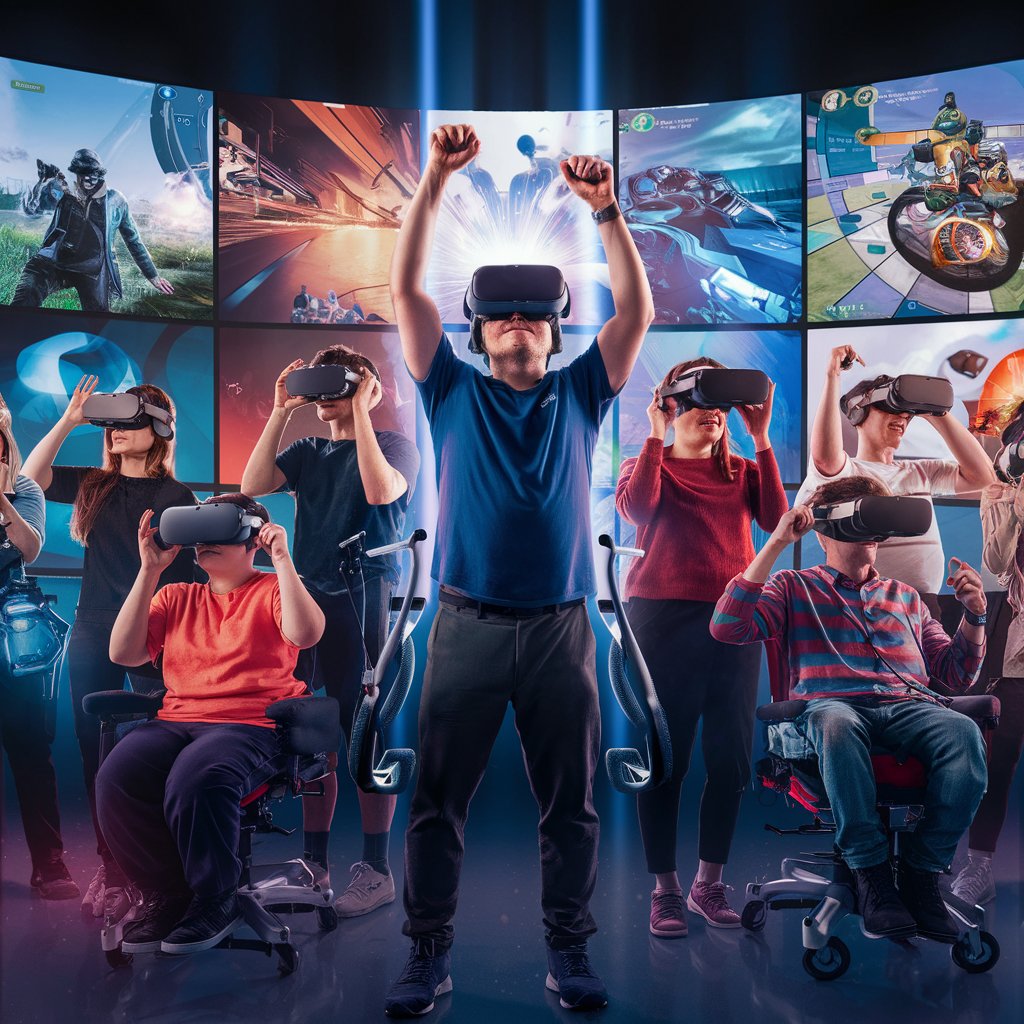Virtual reality (VR) technology is playing a transformative role in enhancing accessibility within competitive gaming. As VR becomes more advanced and widespread, it is breaking down barriers that previously limited participation for many gamers, thereby fostering a more inclusive and diverse competitive gaming community.
One of the key ways VR enhances accessibility is by providing adaptive control options that cater to a wide range of physical abilities. Traditional gaming setups often require precise manual dexterity and extensive use of standard controllers, which can be challenging for players with physical disabilities. VR, however, offers alternative control methods such as hand-tracking, motion controllers, and eye-tracking technology. These innovations allow players to interact with games in ways that suit their individual needs and abilities, making it possible for them to compete on a more level playing field.
Additionally, VR can be customized to accommodate various accessibility needs through its immersive and adaptable environments. For instance, games designed for VR can include adjustable settings such as varying levels of visual contrast, customizable control schemes, and the ability to modify in-game interactions. This level of personalization ensures that players with different needs can tailor the gaming experience to their preferences, reducing barriers to participation and enhancing overall enjoyment.
Another significant advantage of VR in competitive gaming is the potential for creating inclusive virtual spaces. VR environments can be designed to be more accommodating than traditional physical arenas, offering features such as adjustable play areas and virtual assists. These features make it easier for players to engage in competitive gaming regardless of their physical limitations. Virtual arenas can be designed to include elements that support various mobility aids and accessibility tools, ensuring that all players can navigate and interact within the game world effectively.
Moreover, VR technology is paving the way for new forms of interaction that can be particularly beneficial for players with disabilities. For example, VR allows for voice commands and gestures to control game elements, which can be more accessible for players who may struggle with conventional controllers. The integration of advanced AI and machine learning in VR games can further enhance accessibility by providing adaptive gameplay and personalized experiences based on individual needs and preferences.
The impact of VR on accessibility extends to its role in fostering a more inclusive gaming community. By removing traditional barriers and offering more opportunities for diverse players to participate, VR encourages a broader range of individuals to join competitive gaming. This inclusivity not only enriches the gaming experience but also promotes a more diverse and representative gaming culture.
As VR technology continues to evolve, its potential to enhance accessibility in competitive gaming will likely expand even further. Ongoing advancements in VR hardware and software are expected to introduce even more innovative features and solutions that cater to a wider range of accessibility needs. The growing emphasis on inclusivity within the gaming industry underscores the importance of designing and implementing VR technologies that support all players, ensuring that competitive gaming becomes more accessible and enjoyable for everyone.
In essence, VR technology is significantly enhancing accessibility in competitive gaming by offering adaptive control options, customizable environments, and inclusive virtual spaces. These advancements are breaking down barriers, allowing a diverse range of players to engage in competitive gaming and contribute to a more inclusive gaming community. As VR continues to develop, its role in promoting accessibility and inclusivity will become increasingly vital, shaping the future of competitive gaming for all players.

